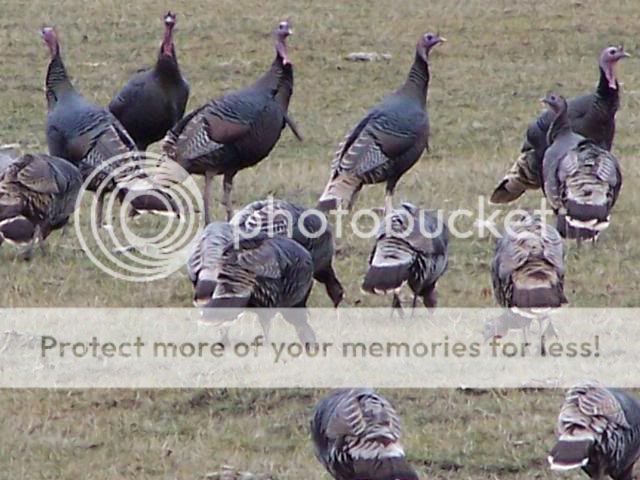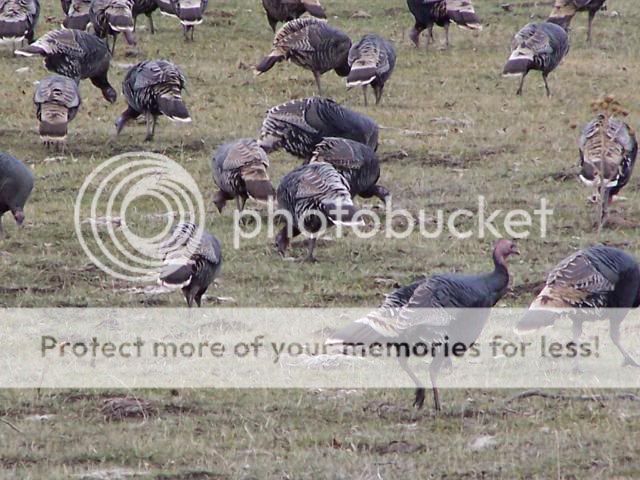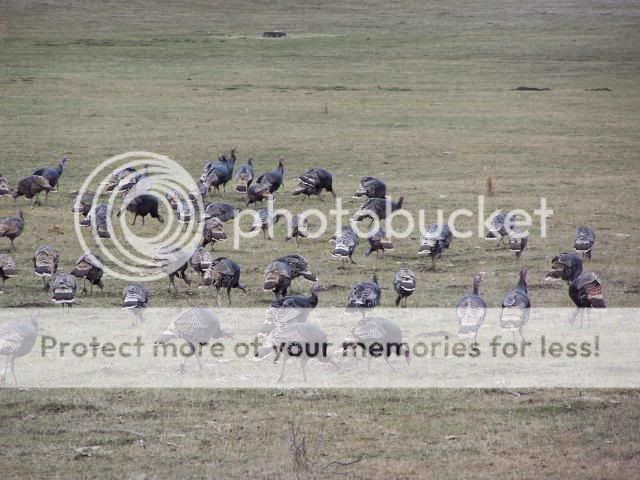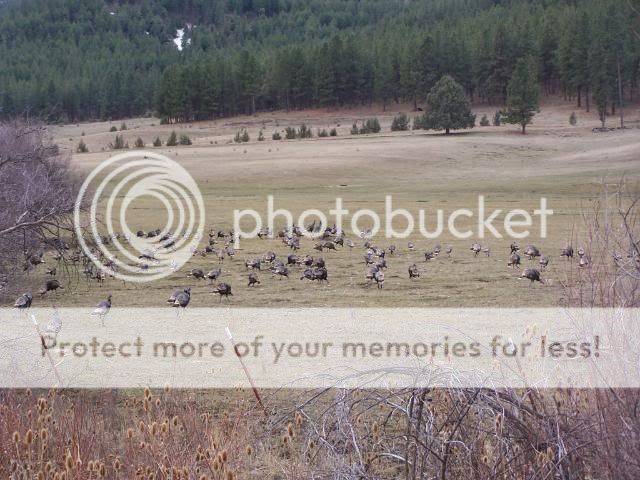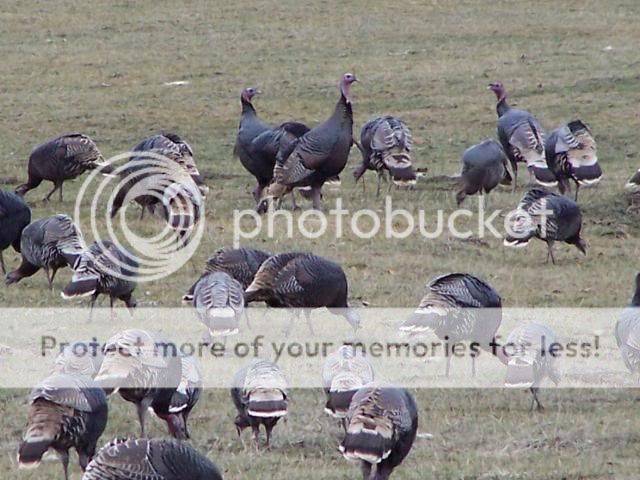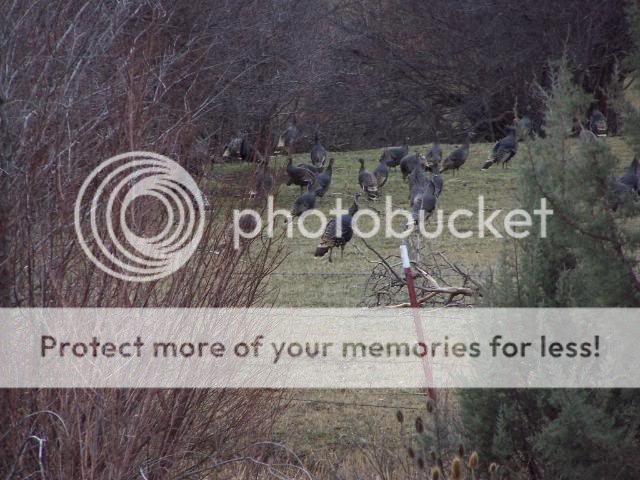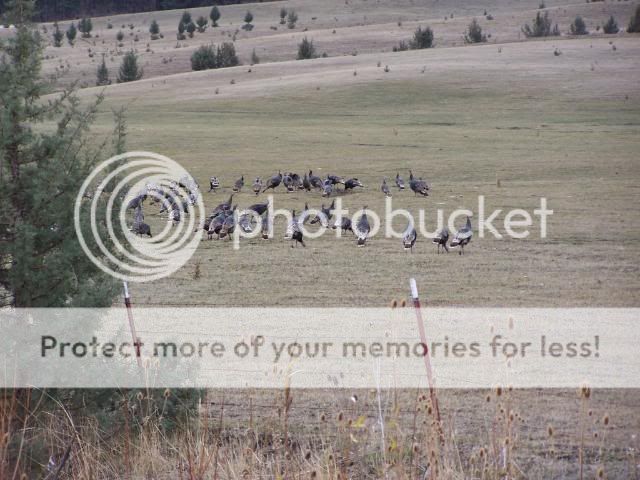Navigation
Install the app
How to install the app on iOS
Follow along with the video below to see how to install our site as a web app on your home screen.

Note: This feature currently requires accessing the site using the built-in Safari browser.
More options
You are using an out of date browser. It may not display this or other websites correctly.
You should upgrade or use an alternative browser.
You should upgrade or use an alternative browser.
Wild Side Ornithology Club
- Thread starter freedombecki
- Start date
- Thread starter
- #102
Just awesome pictures of a flock of turkeys, koshergrl. Thank you!
- Thread starter
- #103
Meleagris gallopavo
Struttin' they stuff, too.
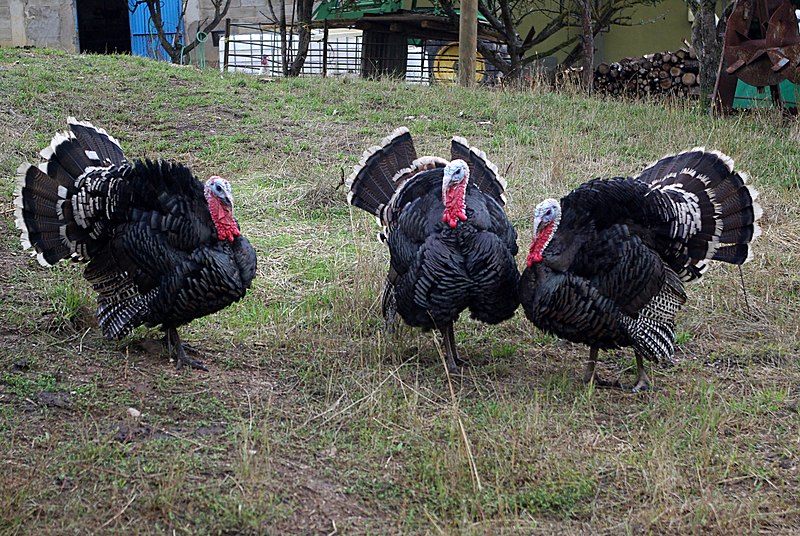
Credits: wikimedia
Struttin' they stuff, too.

Credits: wikimedia
- Aug 4, 2011
- 81,129
- 14,024
- 2,190
The wild ones were doing the strut thing the day we took those pics and I thought I had some in my pics, but I don't see any in the group I put up here...
Those pics are in central oregon...I also knew where they hung out on the reservation around Pendleton, too....
Those pics are in central oregon...I also knew where they hung out on the reservation around Pendleton, too....
- Thread starter
- #105
Hopefully they'll show up. It takes a long time to sort through and find stuff sometimes. We kind of stopped doing albums when the kids left the nest. Now we have a crate full of pictures we took of places we went. I don't think any pictures have been taken since we got here. All our computers from Wyoming had weird problems when we got here, so we took them to computer repair shop, who dispatched all our photographs into thin air when they fixed what we thought were minor glitches. Oh, 'scuse me for whining. What was I thinking?The wild ones were doing the strut thing the day we took those pics and I thought I had some in my pics, but I don't see any in the group I put up here...
Those pics are in central oregon...I also knew where they hung out on the reservation around Pendleton, too....
- Thread starter
- #107
I'm sorry you lost pictures off your computer. It's a real bummer.
- Aug 4, 2011
- 81,129
- 14,024
- 2,190
That's okay, the net loss wasn't so great. I got my digital about 4 years ago, and I lost the pics about 3 years ago...many of them I had on photobucket, so I'm still ahead of the game.
The thing with digital cameras is the sheer volume of pics is immense. I mean, I have maybe 18 pictures of me growing up, lol. Maybe that many of my older boys. I have literally thousands of my two younger kids...most taken in the last 5 years!! I have to remind myself to move out from behind my camera and actually experience things myself, instead of always from behind the camera...
The thing with digital cameras is the sheer volume of pics is immense. I mean, I have maybe 18 pictures of me growing up, lol. Maybe that many of my older boys. I have literally thousands of my two younger kids...most taken in the last 5 years!! I have to remind myself to move out from behind my camera and actually experience things myself, instead of always from behind the camera...
- Thread starter
- #109
The summer tanagers are truly beautiful this year. they're just everywhere here. Photo credits at USGS Patuxent Bird Identification Center, Summer Tanager page
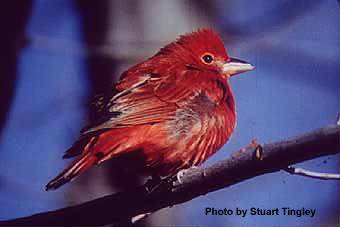
BBS map:
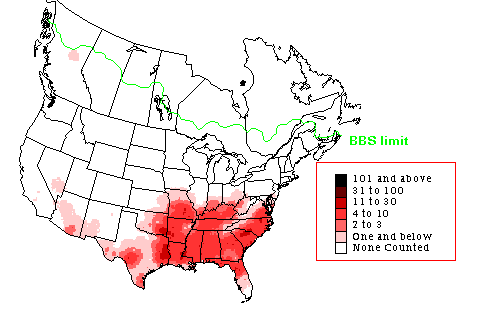
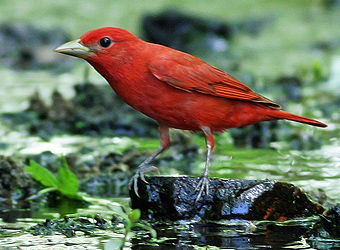

BBS map:

By looking at the map our government furnishes, I know our area is in one of the largest bird count areas for summer tanagers. I was noticing a couple of years ago, we had at least 10 regular visitors daily, and I wasn't outside that much. That means we likely had over 100 different tanagers in our yard every single day from the middle of June till cool weather set in. They are such amazing and beautiful creatures whose pictures never justify the brilliant sight they make when flying across the yard, the lake, or up in the tall trees around. They are also glamour pusses around bird feeders and porches during the summer. Gosh, they're so gorgeous, beautiful in every way. We also get all the tanagers here. It is just that the scarlet tanagers make such a bold statement. Their males are totally red, and the females are able to raise families because they are so dull colored as to call no attention to themselves or their brood. Dimorphic sexes is nature's way of helping species to propagate. Otherwise, I'm afraid their numbers would be quite decimated around trophy hunting species like Homo erectus.

Last edited:
- Thread starter
- #111
Thaqnks, kacunxx. I adjusted to the loss.
- Thread starter
- #112
Barnacle geese (Branta leucopsis)
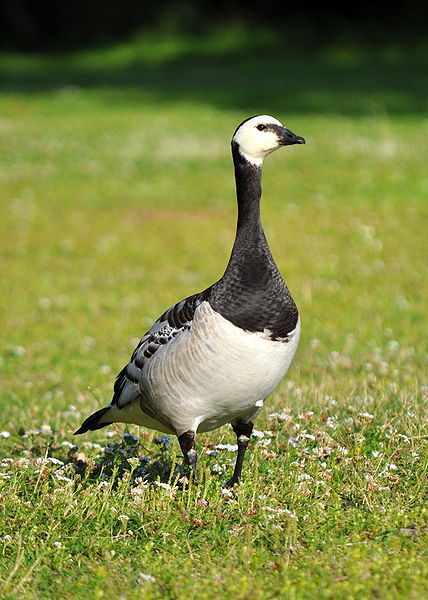

Barnacle geese (Branta leucopsis) have limited range in breeding season from Eastern Greenland to Northern Scotland, and they are so loved by collectors, an interest in them in other northern parts is carrying forward in other arctic regions such as this enclave in Helsinki, Finland for the especially-revered migratory avian:
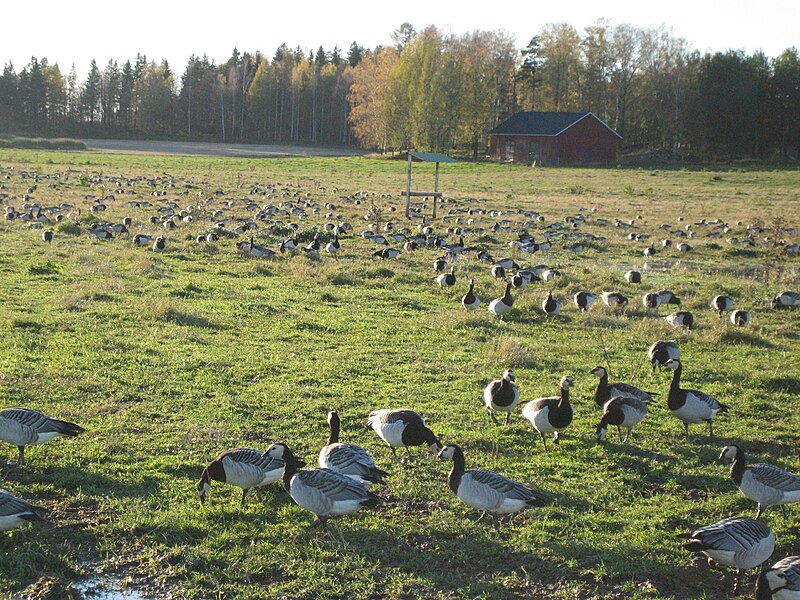
I was writing a poem about migratory gees when the first picture I ran into in Bing! was the Barnacle goose. I thought "those geese with warts all over their faces?" The answer was in semantics. Apparently, the name barnacle for the goose was in use in ancient England prior to the naming of the "barnacles" or a type of arthropod belonging to infraclass Cirripedia in the subphylum Crustacea. As Wikipedia explains, "The Barnacle Goose was first classified taxonomically by Johann Matthäus Bechstein in 1803. Its specific epithet is from the Ancient Greek leuko- "white", and opsis "faced". In English, the term "barnacle" originally referred only to this species of goose and only later to the crustacean barnacles. It is sometimes claimed that the word comes from a Celtic word for "limpet", but the sense-history seems to go in the opposite direction."
So much for present-day confusion as to the origin of words, it seems.
- Thread starter
- #114
FromMersehead RSPB Reserve, Dumfries and Galloway, November 2011.
Up to 30,000 birds from the Svalbard breeding population winter in the area.
[ame=http://www.youtube.com/watch?v=u24ymqmSoIE]Barnacle Geese - Branta leucopsis - YouTube[/ame]
Not sure whether their foraging was getting worms, insects, or cutworms, but they were sure enjoying their meal in part of the above video. At other times, many played while the few kept watch over the flock with chary eye.
Up to 30,000 birds from the Svalbard breeding population winter in the area.
[ame=http://www.youtube.com/watch?v=u24ymqmSoIE]Barnacle Geese - Branta leucopsis - YouTube[/ame]
Not sure whether their foraging was getting worms, insects, or cutworms, but they were sure enjoying their meal in part of the above video. At other times, many played while the few kept watch over the flock with chary eye.
- Thread starter
- #115
Here's another group, captured on film and shared at youtube, of Branta leucopsis flock. Their foraging for bugs/worms or whatever in the field reminds me of aeration equipment we pay the big bucks for for aeration of lawns in the USA. No wonder these little jewels are "favorites of collectors." You don't have to hire staff to keep the grounds of your park with these charming characters doing the work! In all likelihood, they fertilize for free, too.

[ame="http://www.youtube.com/watch?v=-3NRmEfbweQ"]Bernache nonnette (Branta leucopsis) - YouTube[/ame]
Recommended that you go to the lower screen, select the full screen icon at the lower far right and enjoy these little go-getters up close and personal. The difference is amazing.
Last edited:
- Thread starter
- #116
Thanks, I do too, koshergrl. Twice in 3 years, I've seen a flock of very small pure white geese, whose specie I cannot find in my books. They're not large, so I know they're not the large white geese, and they're about the size of chickens but have all the look and characteristic of their larger counterparts. I did not see them this spring, but I was sewing a lot and not at my usual window near the computer. I may move my sewing machine to be closer to the computer, but it will take discipline to keep from getting my papers swamped in with fabric stacks. I do charm quilts, averaging 300 different fabrics per quilt sometimes, and that's only because the charity quilts are done sized with a large 12-year-old in mind at maximum size (less than 80")I love geese.
I'd like to be able to get a picture of the flock next year. It's only here a couple of days to a week, as I recollect. They like my 2.5-acre little lake.
- Aug 4, 2011
- 81,129
- 14,024
- 2,190
My mother said her grandmother told her that three domestic geese ate as much pasture as a cow..it's true, they eat grass as well as everything else. They will keep a pasture groomed and fertilized.
We have snow geese here..they migrate through and hang out on the deflation plain between the river and the ocean; but they are pretty large. Not as big as Canadian Geese but still good sized.
I was looking at information on snow geese and ran across this:
Ross' Goose:
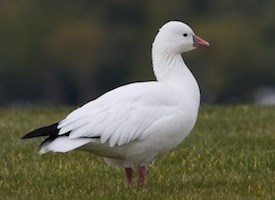
"A tiny white goose with black wingtips, the Ross's Goose is like a miniature version of the more abundant Snow Goose. It breeds in the central Arctic and winters primarily in central California, but it is becoming more frequent farther east."
Ross's Goose, Identification, All About Birds - Cornell Lab of Ornithology
We have snow geese here..they migrate through and hang out on the deflation plain between the river and the ocean; but they are pretty large. Not as big as Canadian Geese but still good sized.
I was looking at information on snow geese and ran across this:
Ross' Goose:

"A tiny white goose with black wingtips, the Ross's Goose is like a miniature version of the more abundant Snow Goose. It breeds in the central Arctic and winters primarily in central California, but it is becoming more frequent farther east."
Ross's Goose, Identification, All About Birds - Cornell Lab of Ornithology
Our annual Festival of the Cranes (sandhill cranes) begins tomorrow at the Bosque del Apache wildlife preserve just south of Albuquerque.
This time of year you still have a lot of birds migrating and passing through plus thousands and thousands that will winter in the Bosque del Apache:

Don't know whether any of our bird watchers among friends and family will come this year, but I'm hoping Hombre and I will find time to drive down and get a few good photos. Every now and then we see a whooping crane among the sandhills that were used as surrogate parents.
I believe this is a photo Hombre took that is still used in Festival promos:

This one didn't win, but they do hold a photography contest every year during the festival.
This time of year you still have a lot of birds migrating and passing through plus thousands and thousands that will winter in the Bosque del Apache:

Don't know whether any of our bird watchers among friends and family will come this year, but I'm hoping Hombre and I will find time to drive down and get a few good photos. Every now and then we see a whooping crane among the sandhills that were used as surrogate parents.
I believe this is a photo Hombre took that is still used in Festival promos:

This one didn't win, but they do hold a photography contest every year during the festival.
- Thread starter
- #119
Thanks, koshergrl. Ross's Geese are different from the ones I saw. Our flock has thinner necks, smoother, zero black on them. They almost look like domestic pure white geese, except they're much smaller. The only characteristic that was outstanding to me was that they were geese as opposed to any other type of fowl that are attracted to lakes for their sheer sake of being near the water while they played mostly on the grassy field as a few enjoyed swimming.My mother said her grandmother told her that three domestic geese ate as much pasture as a cow..it's true, they eat grass as well as everything else. They will keep a pasture groomed and fertilized.
We have snow geese here..they migrate through and hang out on the deflation plain between the river and the ocean; but they are pretty large. Not as big as Canadian Geese but still good sized.
I was looking at information on snow geese and ran across this:
Ross' Goose:

"A tiny white goose with black wingtips, the Ross's Goose is like a miniature version of the more abundant Snow Goose. It breeds in the central Arctic and winters primarily in central California, but it is becoming more frequent farther east."
Ross's Goose, Identification, All About Birds - Cornell Lab of Ornithology
- Thread starter
- #120
It's an exquisite photograph, Foxfyre. Thanks for sharing it. Hope you enjoy the festival. My heart is so there.Our annual Festival of the Cranes (sandhill cranes) begins tomorrow at the Bosque del Apache wildlife preserve just south of Albuquerque.
This time of year you still have a lot of birds migrating and passing through plus thousands and thousands that will winter in the Bosque del Apache:

Don't know whether any of our bird watchers among friends and family will come this year, but I'm hoping Hombre and I will find time to drive down and get a few good photos. Every now and then we see a whooping crane among the sandhills that were used as surrogate parents.
I believe this is a photo Hombre took that is still used in Festival promos:

This one didn't win, but they do hold a photography contest every year during the festival.
Similar threads
- Replies
- 21
- Views
- 319
- Replies
- 39
- Views
- 458
- Replies
- 17
- Views
- 387
Latest Discussions
- Replies
- 7
- Views
- 15
- Replies
- 36
- Views
- 147
- Replies
- 63
- Views
- 873
Forum List
-
-
-
-
-
Political Satire 8049
-
-
-
-
-
-
-
-
-
-
-
-
-
-
-
-
-
-
-
ObamaCare 781
-
-
-
-
-
-
-
-
-
-
-
Member Usernotes 469
-
-
-
-
-
-
-
-
-
-
